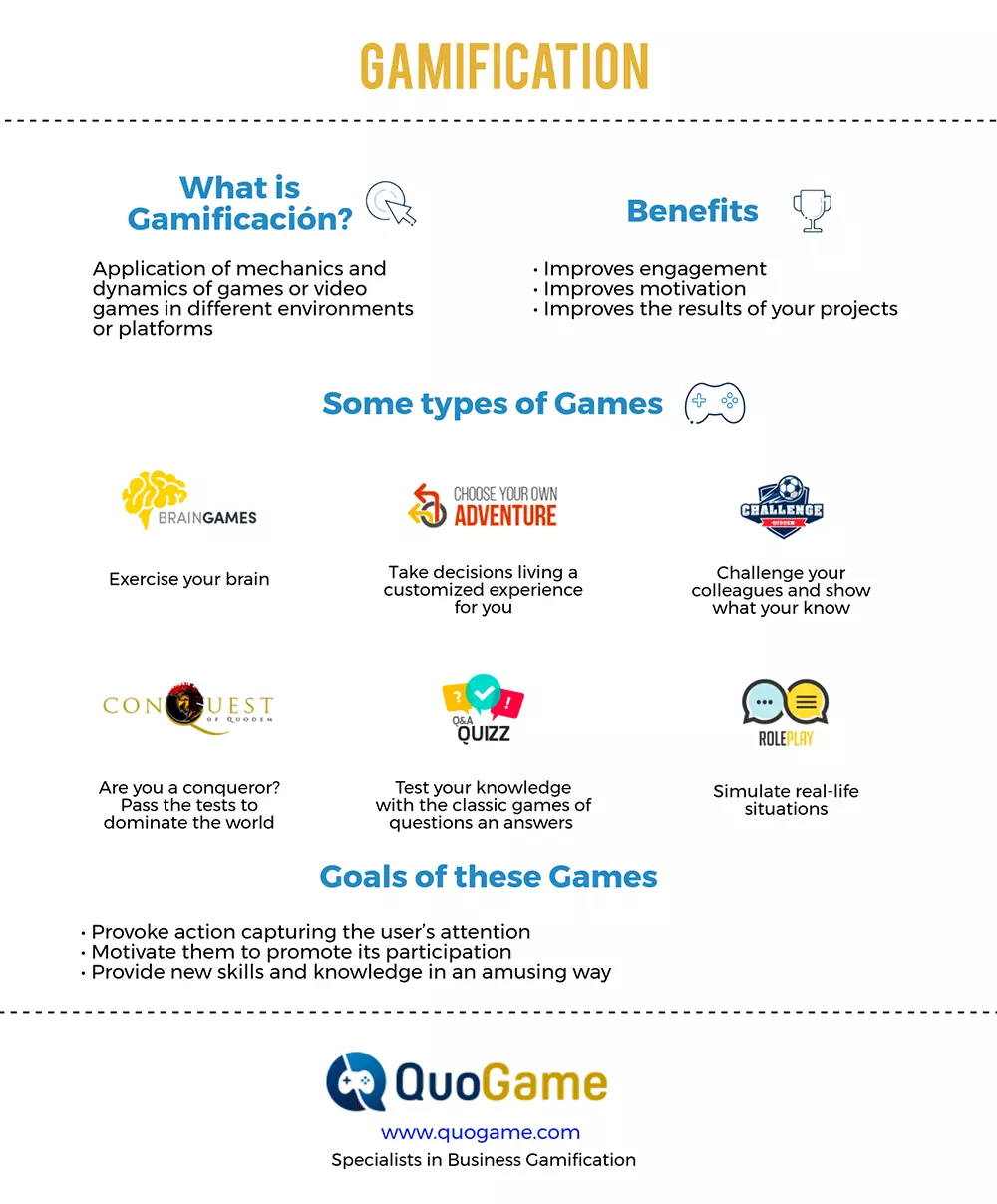Everything you need to know about business gamification
Contents
What is business gamification?
Gamification is defined as the application of mechanics and dynamics inherent to games or video games in different environments or platforms to increase people’s participation and motivation. Business gamification consists of applying these game-based methodologies to business projects and processes, both externally for customers and internally for employees.
We often confuse a gamification project with a game. It is true that mostly the end result is a game, but at times gamification techniques can be applied to existing projects. In our opinion, any project can have a gamification component that helps with user engagement, loyalty and motivation.
What has driven Gamification?
“We don’t stop playing because we grow old; we grow old because we stop playing”. George Bernard Shaw.
There are mainly three factors:
► There is a predisposition in human nature towards games. From a very young age, children learn and develop by playing. Through games, we learn to enjoy life in a much more pleasant way.
► Several studies have been carried out on the cerebral effects of video games, demonstrating that they improve attention, flexibility and other skills.
► Certain mental faculties seem to improve with video games, including attention, the rapid processing of information, the flexibility to change from one task to another and the mental rotation of an object. These improvements have been demonstrated with rigorous tests. (Scientific American Society).
It is often unnecessary to have big projects
Gamification techniques have been developing for several decades, especially driven by the video game industry. However, they have only started to be used in business projects in recent years; demonstrating that the application of simple game techniques significantly improves the participation and motivation of users and, therefore, the achievement of the project objectives.
Another important factor that has driven gamification is the characteristics of the consumers-users. Since the ZX Spectrum was launched in 1982, the video game industry and its market penetration have not stopped growing. Nowadays, any professional under the age of 50 has played a video game at some point, and decision makers and managers perfectly understand the benefits and techniques used in gamification projects, so it is much easier for them to immediately see the advantages offered by this type of technique. To this we can add that our target audience has changed, since currently the age of the average player is 35 years old, 26% are under 18 and 27% are over 50.
The strong development of the video game industry (it is estimated that it will exceed 90 billion euros in 2020) will boost the appearance of new technologies, knowledge and techniques that, once applied to our projects, will be capable of revolutionising the way in which we interact with them.



